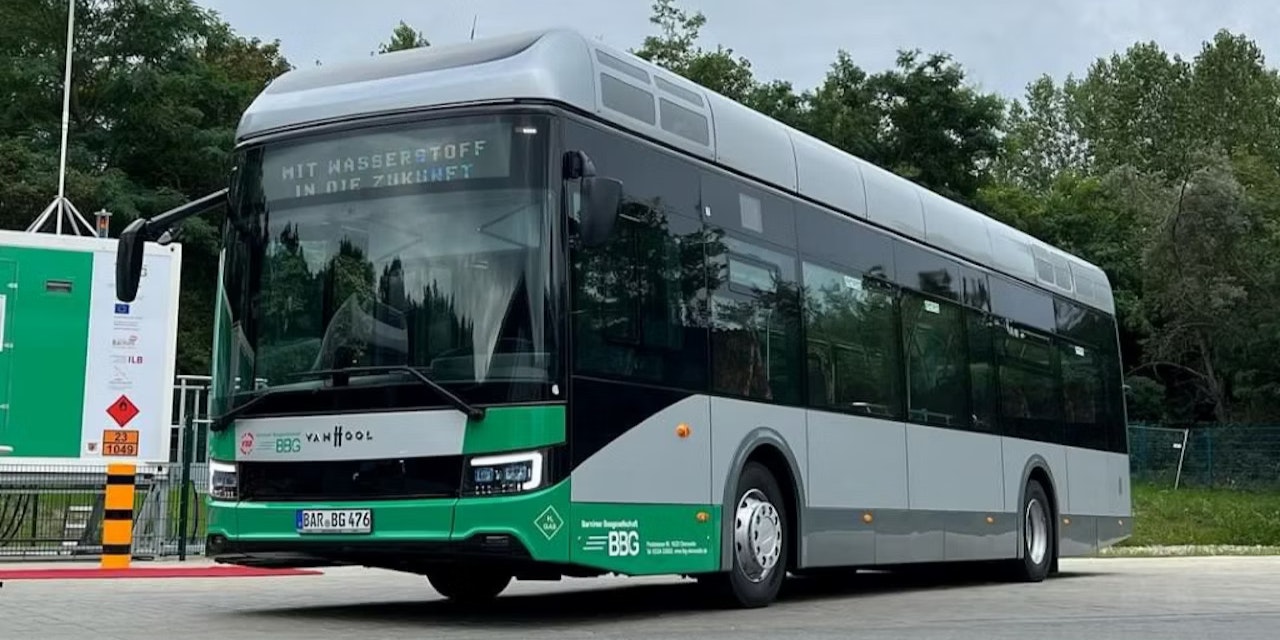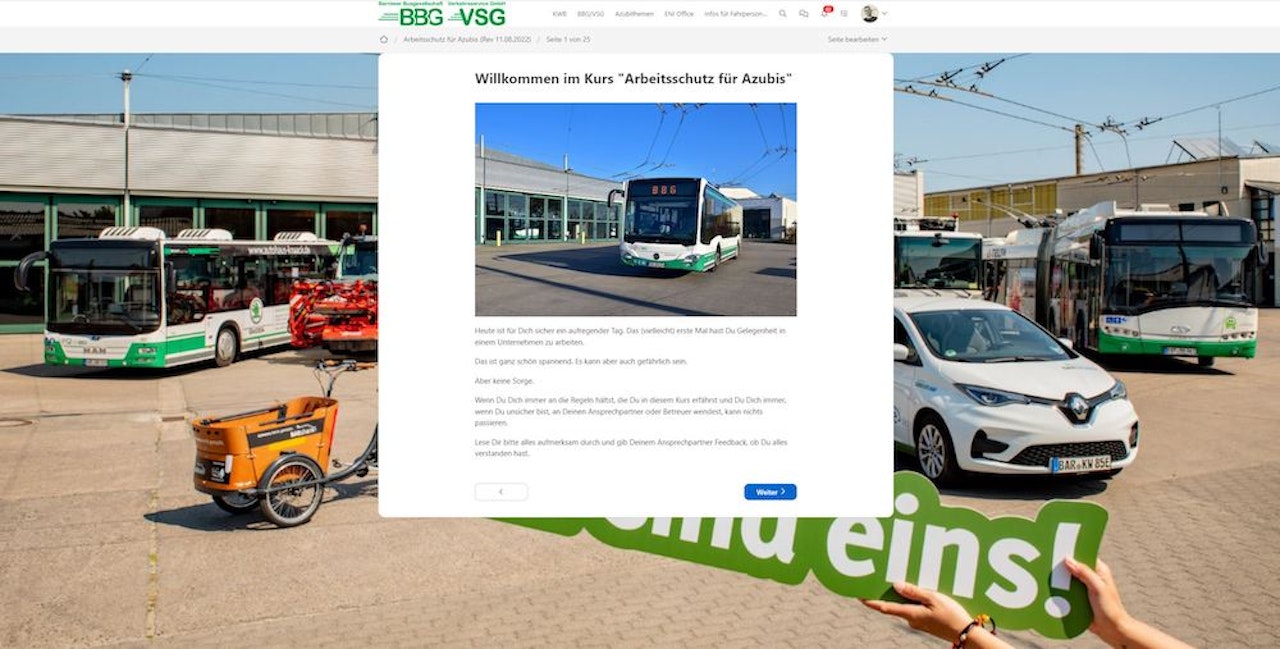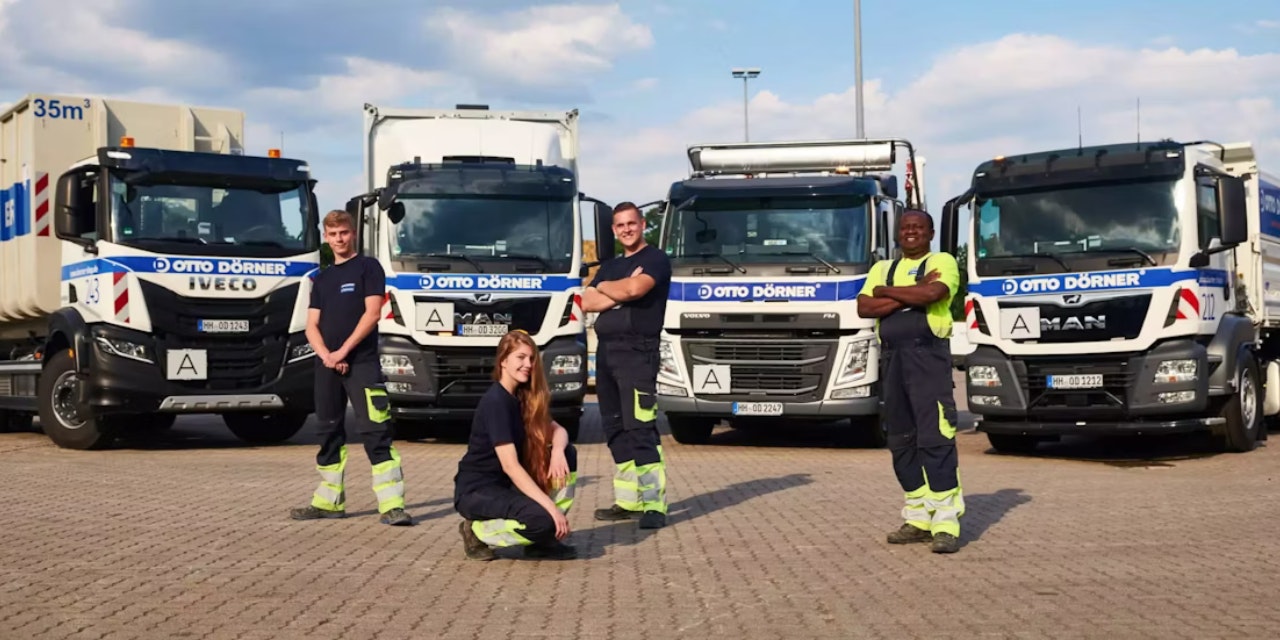With GoPro and LMS to better route knowledge and performance
Customer stories | Barnimer Busgesellschaft

“Barnimer Busgesellschaft” – a bus company from Germany – takes an innovative approach to onboarding and on-the-job-training: Trainees create videos and courses using tools like GoPro and their company’s own eLearning platform (LMS). In this way, they make important knowledge available for the road.
Facts:
Location: Germany
Employees: 300
Industry: public transport
The Barnimer Busgesellschaft (BBG) in the northeast of Berlin is a regional public transport company with around 55 regional routes and 130 vehicles that transports around 11 million passengers a year. Logically, everything has to run exactly according to the timetable. But that’s not always the case. Despite detailed onboarding with intensive training, the sometimes complex route plans are not always completely internalized. Routes also change frequently, for example due to road works or detours. This in turn can lead to problems in the operational process. In order to avoid precisely this, Steffen Groß, who has been head of training for many years, has developed a new and dynamic onboarding concept for the BBG.
A new kind of onboarding
The most important component of the new onboarding: the integration of employees takes place digitally, as an eLearning course using Fellow Digitals' learning platform Fellow LMS (previously called Coursepath). This means that the courses are always available everywhere, even on the bus, and can serve as a quick reference if necessary. This is already a huge improvement in terms of availability and efficiency, but Steffen Groß goes a few steps further.
For every single route map there is a course, consisting of a video filmed via GoPro during a normal line trip. In addition to the video, there are supplementary notes. And the participant can ask questions. “I didn’t understand this correctly now, do I have to turn right or left here?” In this way, the quality of the course is also constantly improved, says Steffen Groß.
The bus company uses a clever trick to make the training really effective: the staff from the training department do not create the courses themselves or source them out to external parties, but have them created by its own trainees. After all, the more someone works with the subject matter, the deeper the knowledge gets in. The prerequisite for this is a multi-author tool that is easy to use. In the future, every employee with subject expertise should have author rights and be able to create their own courses.
With this concept, BBG solves a difficult and personnel-intensive issue. It gets new drivers on board faster without having to let them ride along with colleagues for a long time and is building a comprehensive academy where every old and new employee can get targeted information and keep themselves up to date.

Searching for the best tool
According to Steffen Groß, setting up the many instructional videos brought with it a challenge that should not be underestimated: where should all the material be hosted and made available? YouTube appeared to be an easy option, but with the disadvantage that a lot would have had to be pixelated here (faces, license plates, etc.) to ensure data protection. So a closed environment was needed that would only be accessible to employees.
Firstly, the size of the data volume was a decisive criterion (with so many videos, a considerable amount of storage space is needed quickly), and secondly, the speed of the upstream and, above all, the downstream. Furthermore, mobile access had to be possible, especially for employees who don’t have their own e-mail address. In the end, the characteristics of the multi-author tool were particularly important, i.e. whether simple authoring, i.e. setting up and editing courses with various participants, was possible without the need for authors to undergo extensive training.
These requirements were fulfilled by the Fellow LMS, which not only convinced with DSGVO-compliant and intra-European hosting of the content, but also with its easy handling for authors and participants. Steffen Groß particularly praised the mobile access via the browser: the responsive design works perfectly. And by means of anonymous access codes handed out on paper with a QR code, driving personnel can also gain access if no (company) mail address is available.
The practical implementation
In the Fellow LMS, the academy was set up for onboarding and all other courses. The goal was to have a central hub, where all information, forms, contact persons, etc. can be found. And indeed, the platform is used precisely as such: for training, as a reference work or wiki, but also as a source of information to be on the same level of knowledge as other colleagues.
This applies not only to courses on line knowledge and vehicle specifics, but also to very general courses such as Microsoft training, because in Steffen Groß’s view, the same principle applies here: If I can get information online, I don’t need to ask a more experienced colleague for advice. The latter may be happy to help, but there are often losses in effectiveness. If, on the other hand, you get into the habit of looking things up in the online academy first thing (using the search function, for example), everyone makes faster progress.
According to Groß, this is exactly the ideal case, at least for the trainees who are growing up with the new system, so to speak. It doesn’t even occur to them to ask or look elsewhere than in the eLearning portal. And if the knowledge is not available there, they receive a message asking them to have the relevant course created.
Everything under one roof
Since then, the Barnimer Busgesellschaft’s eLearning Academy has consisted of a constantly growing range of online courses, sometimes short, sometimes long, sometimes created in-house, sometimes booked in. The BBG has lately discovered the following option for extending their academy: courses on standard topics such as Microsoft 365 are booked externally – in this case via ENI Digital Learning – and offered in the Fellow LMS. This means that no additional system needs to be used, but everything takes place at the usual location.
Even occupational health and safety instruction – including detailed reporting – takes place on the Fellow LMS. In the Corona lockdown, this implementation had the great advantage that digital training processes were already established and even mandatory occupational health and safety briefings could take place smoothly and in compliance with the pandemic.

The result
Faster onboarding, better expertise and higher performance – these are the main gains achieved by using the eLearning platform. As a result, BBG is positioning itself as an innovative employer in the region and attracting motivated staff. But other factors are decisive for the long term: more documentability without paperwork, more legal security and independence from classroom training.
However, the self-motivation of the participants is also particularly crucial. In addition to mandatory courses, employees discover other courses that are of interest to them and keep themselves up to date along the way.
Not to be forgotten: sensibly used breaks. Bus drivers often have idle time between trips, which is usually not paid for. However, if the employee takes a mandatory course during this time, this is compensated as paid working time. According to Steffen Groß, this is a win-win situation:
“We can teach the content and the employees can do their job better. They use the time for this, when it’s not worth it for them to go home.”
For the future, Steffen Groß would like to see even more acceptance, even more authors (more internal training courses set up as a multi-author project) and some nicer structuring of the content. “And then of course it’s like this: when you are using the software, more and more possibilities come along.”
We love to share our experience with you
Related customer stories



